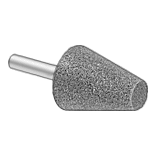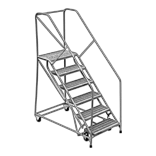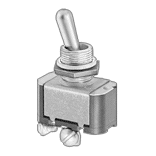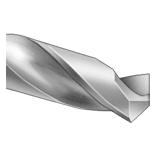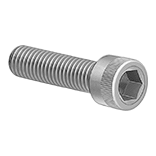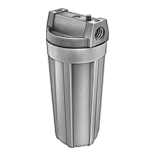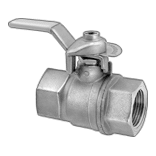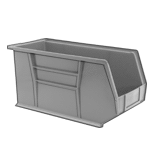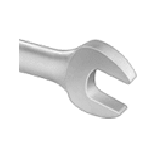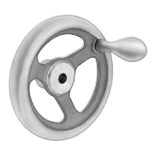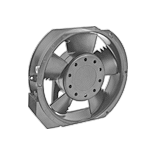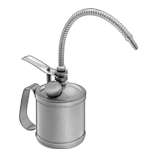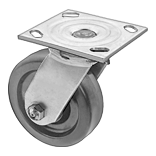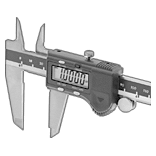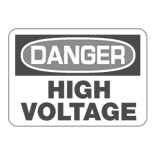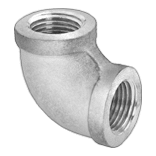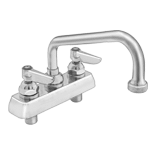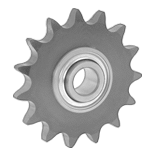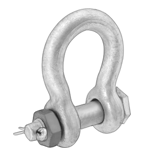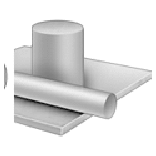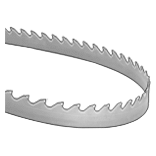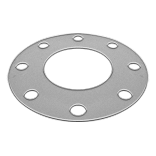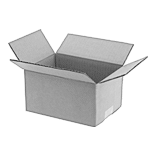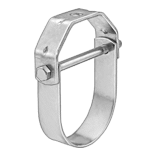High-Temperature 3D Printer Resins

Parts made from these resins remain strong and rigid in temperatures that would soften most plastic, so they're often used near ovens, engines, and other hot machinery. They're a good lightweight alternative to machined metal parts. Print them on a digital light processing (DLP), stereolithography (SLA), or LCD 3D printer.
Ceramic-filled resins are the stiffest in our 3D printer resin offering once cured. Use them in parts that need to remain stable and not stretch under heavy loads.
Maximum exposure temperature is the point at which a printed part will begin to deform. Above this temperature, your part will start to lose structural integrity.
| Tensile Strength | Color | Flexural Modulus | Impact Strength | Hardness | Max. Exposure Temp. | Weight, g | Each | |
Ceramic-Filled Resins—Bottle | ||||||||
|---|---|---|---|---|---|---|---|---|
| 12,320 psi (Excellent) | White | 1,270,000 psi (Rigid) | 0.45 ft.-lbs./in. (Good) | Durometer 96D (Hard) | 280° C 536° F | 1,650 | 0000000 | 0000000 |
3D Printer Resins

Because these resins balance strength and impact resistance, they're good for printing parts for general purpose applications. Print them on a digital light processing (DLP), stereolithography (SLA), or LCD 3D printer.
Tensile strength is the best measure of a resin’s overall strength. Similar to the stress applied on a rope during a game of tug-of-war, it’s the amount of pulling force a material can handle before breaking. A higher rating means a stronger resin.
Elongation is the amount of stretching that a material can withstand before breaking. Resins with a low elongation can break suddenly under load, while resins with a high elongation will deform before breaking. The higher the percentage, the more your part will deform before breaking.
Maximum exposure temperature is the point at which a printed part will begin to deform. Above this temperature, your part will start to lose structural integrity.
| Tensile Strength | Color | Flexural Modulus | Impact Strength | Hardness | Flexural Strength, psi | Elongation | Modulus of Elasticity | Max. Exposure Temp. | Weight, g | Each | |
| 5,360 psi (Good) | White | 180,000 psi (Flexible) | 0.54 ft.-lbs./in. (Good) | Durometer 74D (Medium) | 8,700 | 20% | 0.261 ksi × 103 | 45° C 113° F | 1,000 | 0000000 | 0000000 |
High-Strength 3D Printer Resins

Used to print tooling, fixturing, and brackets, these resins create high-performance parts that are strong, stable, and rigid. Print them on a digital light processing (DLP), stereolithography (SLA), or LCD 3D printer.
Formlabs resins come in a cartridge compatible with Formlabs printers—just pop them in. To use them with other printers, they have a removable cap to pour out the contents of the cartridge.
Maximum exposure temperature is the point at which a printed part will begin to deform. Above this temperature, your part will start to lose structural integrity.
| Tensile Strength | Color | Flexural Modulus | Impact Strength | Hardness | Max. Exposure Temp. | Weight, g | Each | |
Formlabs Resins—Cartridge | ||||||||
|---|---|---|---|---|---|---|---|---|
| 9,460 psi (Excellent) | White | 1,360,000 psi (Rigid) | 0.30 ft.-lbs./in. (Poor) | Durometer 89D (Hard) | 160° C 325° F | 1,000 | 00000000 | 0000000 |
| 10,000 psi (Excellent) | White | 493,000 psi (Rigid) | 0.43 ft.-lbs./in. (Good) | Durometer 89D (Hard) | 75° C 170° F | 1,000 | 00000000 | 000000 |
